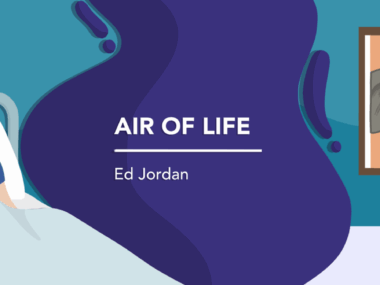Risk Factors for Sleep Apnea Differ in Children and Adults
Written by |

Risk factors for obstructive sleep apnea (OSA) — a condition in which airflow is blocked intermittently during sleep — differ between children and adults with cystic fibrosis (CF), according to a study.
Upper airway conditions, such as enlarged tonsils and inflamed sinuses, appear to be important risk factors for children with CF in developing OSA. The risk factors for OSA in adults with CF include being obese and having a crowded oropharynx, as assessed with a score of the size and shape of the tongue and esophagus. (The oropharynx is the part of the pharynx that lies between the soft palate and the hyoid bone.)
The study, “Risk Factors for Obstructive Sleep Apnea in Cystic Fibrosis,” was published in the journal Pediatric Pulmonary.
OSA places a significant burden on people’s health and quality of life, especially among individuals with other respiratory conditions.
Complaints of snoring, difficulty breathing and mouth breathing at night, along with daytime sleepiness — all indicative of OSA — are being increasingly reported by CF patients. Limited sleep study data suggest that co-existing OSA exists in 55–75% of children with CF.
Both adult and pediatric patients with CF who are referred for sleep studies have a three-times greater likelihood of having moderate-severe OSA, as compared to their age-, sex-, race-, and body mass index (BMI)-matched non-CF counterparts.
Researchers in the U.S. looked at 42 children and 32 adults with CF who were referred to the Michigan Medicine Sleep Disorders Center for diagnostic sleep studies.
The most common complaints that led to the sleep studies were snoring and excessive daytime sleepiness. There were no differences in snoring between adults and children with CF, although more adults reported excessive daytime sleepiness. In addition, daytime irritability and hyperactivity were reported in 14% of the children.
A soft larynx (voice box) or trachea (windpipe) and concerns about decreased nighttime oxygen also were indications for sleep studies.
Lung function and Brasfield scores — a quantification of lung disease using imaging where lower scores are indicative of more severe disease — were lower among adults.
Enlarged tonsils were more common among children. Four of the children, 10%, had undergone removal of their tonsils and adenoids (a patch of tissue just behind the throat) on average 8.5 years prior to their sleep study. Five adults also had had their tonsils and adenoids removed, but the timing in relation to the sleep study was unavailable.
Five children had softening of various parts of their airways, and three of these children had OSA. Risk of OSA was higher among children with enlarged tonsils versus those without, and both of the adults with enlarged tonsils at the time of the study had OSA.
Symptomatic chronic sinusitis — when the spaces inside the nose and head are swollen or inflamed — and oropharyngeal crowding were more frequent in adults. Two adults had a history of sinus surgery with no active sinus disease at the time of the sleep study. However, chronic sinusitis was associated with an increased risk of OSA in children, but not in adults. In contrast, oropharyngeal crowding led to an increased risk of OSA among adults, but not among children.
A majority of the patients, 53%, had a diagnosis of OSA based on the sleep studies, and neither age nor sex predicted OSA. There was more fragmented sleep and worse nighttime oxygen levels among patients with OSA versus those without. Those with OSA also showed a trend toward higher carbon dioxide levels, though they were within the normal range on average.
Neither snoring nor excessive daytime sleepiness were significant predictors of OSA among children. Three of the six children with daytime irritability and/or hyperactivity had OSA.
However, adults with a history of snoring showed a trend toward having more OSA. While all seven adults without excessive daytime sleepiness had OSA, less than half (44%) of those with excessive daytime sleepiness had OSA.
“Interestingly, the presence of excessive daytime sleepiness was not associated with more OSA,” the scientists wrote. “Frequency of OSA was, in fact, lower among adults who complained of excessive daytime sleepiness as compared to those who did not.”
Fourteen children and 16 adults with CF were either obese or overweight. Overweight and obese patients showed a trend toward increased risk for OSA.
Obese or overweight children showed no difference in their mean AHI — apnea-hypopnea index, the number of breathing stops or shallow breathing events recorded per hour of sleep during the study — as compared to normal weight or underweight children, whereas overweight/obese adults had higher mean AHI than adults with normal or low weight.
“These data suggest that nutritional status, i.e., being overweight/obese, appears to be a risk factor for OSA in adults but not in children with CF,” the researchers wrote.
The investigators also looked at lung function tests and pulmonary exacerbations (sudden worsening of symptoms) in the year prior to the sleep study, and found no associations with OSA risk.
“Although there was an association between poor lung function and both reduced sleep duration and worse sleep fragmentation, we did not find a relationship between the presence or absence of OSA and any of our measures of CF lung disease severity,” the researchers wrote.
Overall, “tonsillar hypertrophy [enlarged tonsils] and chronic sinusitis were associated with an increased risk of OSA in children, whereas overweight/obesity and a crowded oropharynx predicted OSA in adults,” the scientists added.
“Although children and adults are often seen as part of the same CF continuum, these findings suggest that risk factors for OSA, and possibly also mechanisms for OSA in children and adults with CF, may differ, as they often do in patients without CF,” they concluded.








